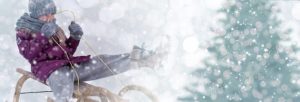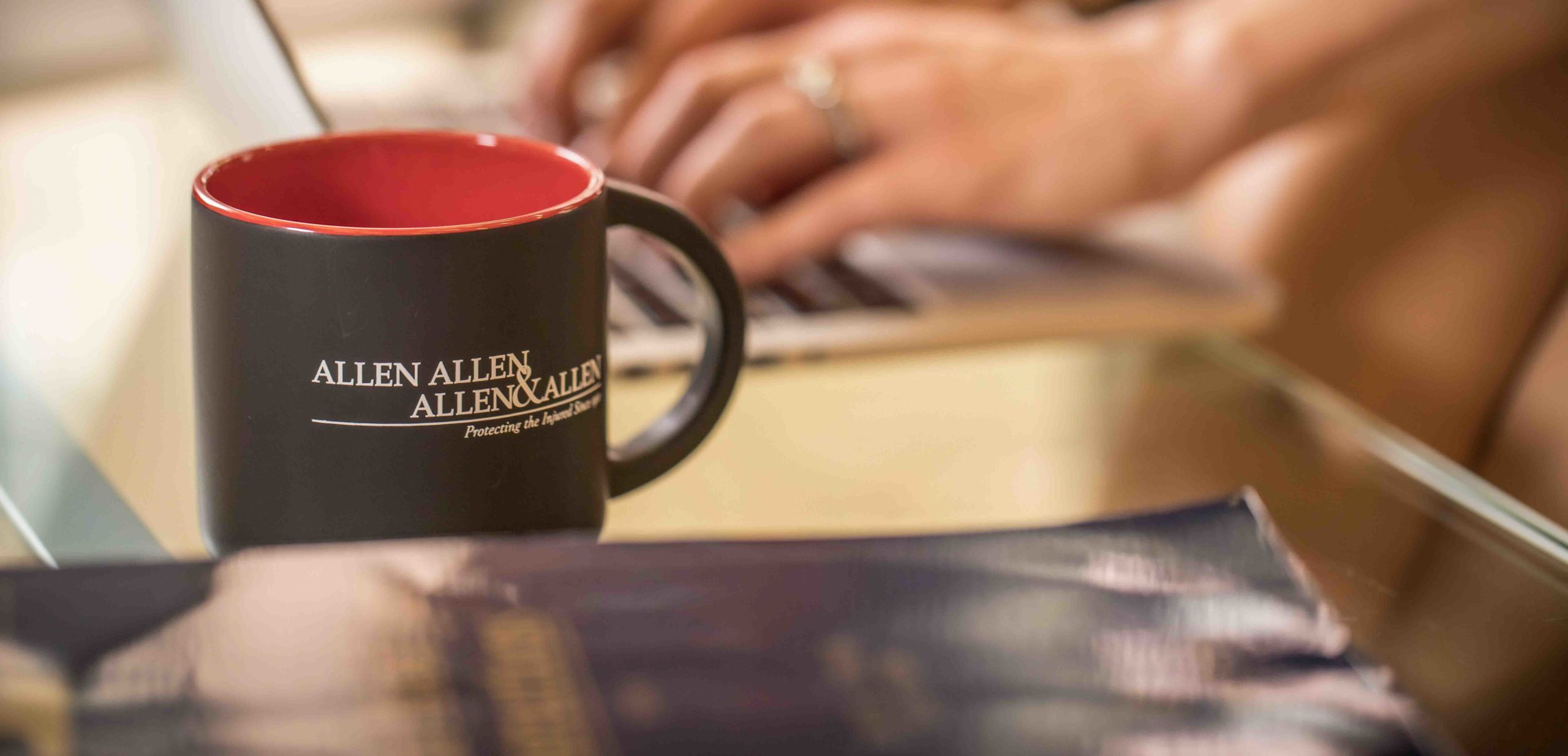Virginia has had its share of wintry weather this year, and there’s still a month to go. Many families go sledding and take advantage of the snowy conditions. Although this fun winter sport may seem like a relatively safe activity, thousands of people suffer sledding-related injuries every year.

The latest study on the issue shows that hospitals treated over 220,488 sledding, snow tubing, and toboggan-related injuries in the U.S. over a 10-year period. Nearly 70% of these injuries were suffered by people aged 19 and under. [1] Because of this, it’s important to recognize the risks and ways to reduce them.
The most common sledding injuries are cuts, bruises, and broken bones. [2] Yet more serious injures can occur, such as traumatic brain injuries. Researchers determined that close to a third of reported sledding injuries involved head trauma, with nine to ten percent of those injured suffering from traumatic brain injuries. The head was the most common body part injured in sledding accidents, meaning that proper precautions should be taken to reduce the risk of head injury.[3]
Pick a safe location to sled
Even though only two percent of sledding injuries happen on roadways, children hurt in roadway accidents are more likely to suffer head injuries and traumatic brain injuries. As a result, families should choose to sled on slopes away from any nearby streets and make sure that the slope doesn’t end near any roadway. The most common sledding accident is collision with a stationary object, such as a tree or large rock. Safety experts recommend picking a slope that is free of rocks, trees, fences, light poles and other obstacles.[4]

Safety checklist for sledding
Before families go sledding, they should always check their equipment. Sledders need to be dressed in warm winter gear, including gloves and boots, to protect themselves from the cold and snow.[5] In addition to their clothing, sledders should check their sleds to make sure they are in good shape before taking them down a hill. Defects or tears can cut the rider or cause the sled to handle differently than expected.[6]
Helmets and sledding
Although they are not mandatory, sledders should consider wearing a helmet. Helmets cannot prevent all head injuries, but using a helmet can reduce the risk of injury.[7] Ski or snowboard helmets offer the best protection, but a bike helmet will suffice.[8]
In addition to the recommendations above, there are other ways to reduce the injury risks that sledding can pose:
- Sled feet-first. Experts have found that head-first sledding reduces the rider’s control, increasing collision risks.[9]
- Do not get on a sled that is being pulled by a motor vehicle. While sledding accidents resulting from motor vehicle tows are not as common as other accident types, the risk of serious injury is heightened in these kinds of accidents.[10]
- Never overburden a sled with too many riders. An overloaded sled can be hard to control, increasing the risk of injury.[11]
- Make sure that children are supervised while sledding. Unattended children may unknowingly get themselves into a dangerous situation.[12]
- Stay hydrated. Bringing water to the slope is a good idea, as it can be easy to neglect hydration while having fun.[13]
Sledding is a fun activity for families to enjoy. Knowing the dangers and how to prevent them is an important first step to keeping everyone safe and healthy on the slopes. Taking a few small precautions can go a long way.
[1] https://www.sciencedaily.com/releases/2020/12/201216113244.htm
[2] http://www.nationwidechildrens.org/cirp-sledding-safety; http://www.nbcmontana.com/news/safety-tips-to-consider-while-sledding/37307478
[3] http://www.webmd.com/children/news/20100823/sledding-accidents-land-thousands-of-kids-in-er; http://www.nbcnews.com/id/40479252/ns/health-childrens_health/t/sledding-can-send-kids-slip-sliding-injury-study-says/
[4] http://www.webmd.com/children/news/20100823/sledding-accidents-land-thousands-of-kids-in-er; http://www.nbcnews.com/id/40479252/ns/health-childrens_health/t/sledding-can-send-kids-slip-sliding-injury-study-says/; http://www.nationwidechildrens.org/cirp-sledding-safety
[5] http://orthoinfo.aaos.org/topic.cfm?topic=A00306
[6] http://www.nbcmontana.com/news/safety-tips-to-consider-while-sledding/37307478
[7] http://www.nationwidechildrens.org/cirp-sledding-safety; http://www.nbcmontana.com/news/safety-tips-to-consider-while-sledding/37307478; http://orthoinfo.aaos.org/topic.cfm?topic=A00306; http://www.nbcnews.com/id/40479252/ns/health-childrens_health/t/sledding-can-send-kids-slip-sliding-injury-study-says/
[8] http://thriving.childrenshospital.org/sledding-ice-skating-top-tips-winter-sports-safety/
[9] http://www.nationwidechildrens.org/cirp-sledding-safety; http://www.nbcmontana.com/news/safety-tips-to-consider-while-sledding/37307478; http://orthoinfo.aaos.org/topic.cfm?topic=A00306
[10] http://www.webmd.com/children/news/20100823/sledding-accidents-land-thousands-of-kids-in-er; http://www.nbcnews.com/id/40479252/ns/health-childrens_health/t/sledding-can-send-kids-slip-sliding-injury-study-says/
[11] http://www.nationwidechildrens.org/cirp-sledding-safety
[12] http://orthoinfo.aaos.org/topic.cfm?topic=A00306; http://www.nationwidechildrens.org/cirp-sledding-safety
[13] http://thriving.childrenshospital.org/sledding-ice-skating-top-tips-winter-sports-safety/



